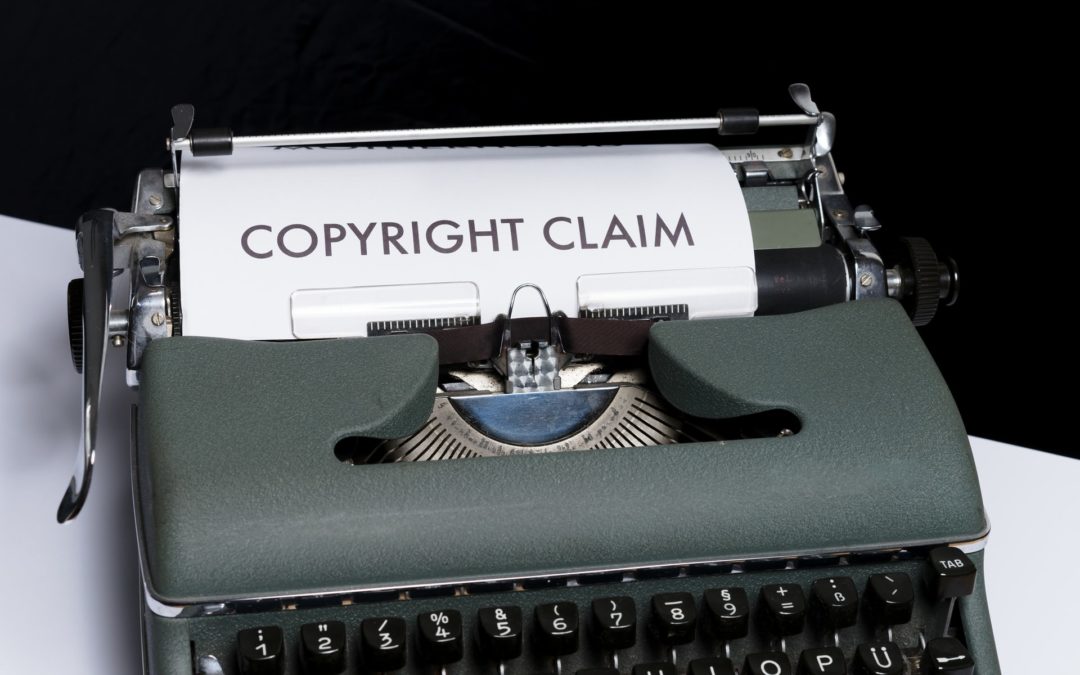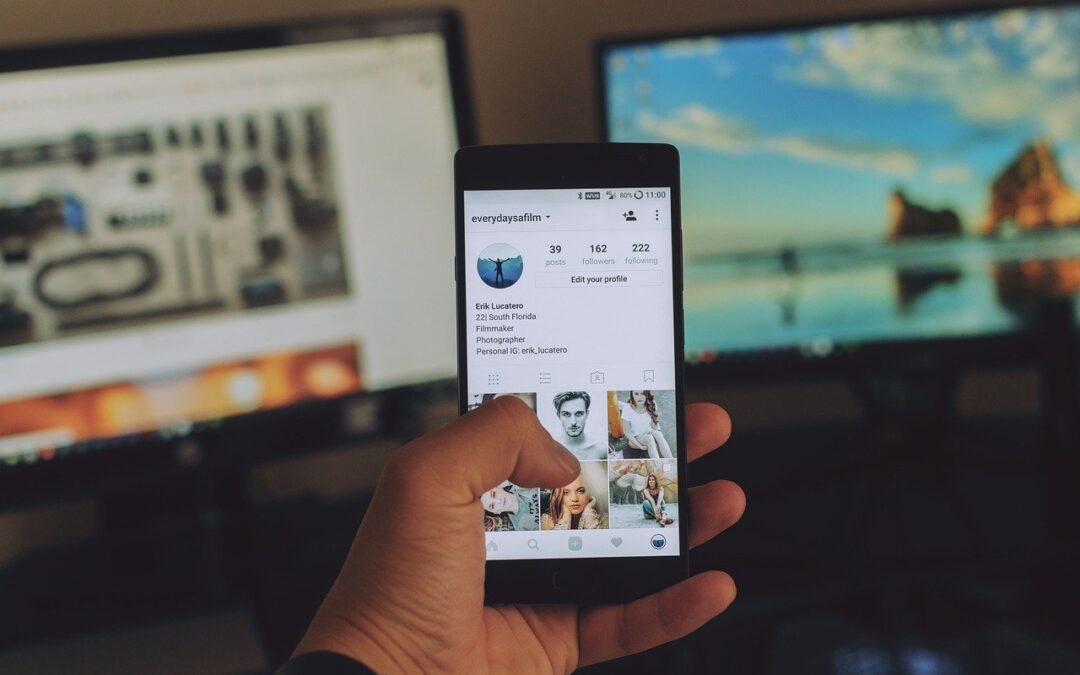
Jul 29, 2022 | Intellectual Property
What is copyright?
Copyright is the exclusive right of owners to protect certain creative works from being copied or reproduced by others, without permission.
What types of work does copyright apply to?
Copyright applies to artistic and creative works such as music, sound recordings, text (for example, in books, reports and webpages), films, television commercials, radio programs, podcasts and computer programs.
When does copyright apply?
In Australia, copyright protection exists automatically from the moment content is created in a tangible form. This means the content has to be either written down, recorded, saved on a device or filmed. The work does not need to be published for copyright to apply.
In Australia, there is no formal registration process for copyright. Unlike trademark registration, copyright protection automatically applies if:
- The work was original;
- The work was created by an Australian resident or citizen; and
- The work was either created or first published in Australia.
What are the limits on copyright protection?
Copyright protection protects the expression of a concept. It does not protect underlying ideas, styles, techniques or concepts themselves. The limits of copyright protection can be best understood through the following examples.
Example 1: You have an idea to build a particular online business. Before you even begin building the business, you attempt to validate the idea by sharing it with a friend. Your friend then goes and builds that online business in the exact way that you described it to them. You cannot pursue them for copyright infringement because there is no protection in underlying ideas.
Example 2: You show your friend a particular website that you have built for your online business. Your friend then goes and builds a website which has the same functionality but looks completely different. Again, you cannot pursue them for breach of copyright because they have only copied the underlying idea, but have not copied your designs, text or other artistic works.
Example 3: Your friend builds a website with the same wording, designs and pictures as your website. In this example, you can pursue them for copyright infringement because they have reproduced your work without your permission.
The copyright symbol ©
Having a copyright symbol “©” or notice on your published work is useful to remind people that your work has copyright protection. However, because copyright protection applies automatically in Australia, not having a copyright mark does not mean that your work is free for anyone to reproduce, or that you have granted a license for anyone to use your work. Despite the automatic protection, our recommended best practice is to always have the copyright symbol on your webpages and other works.
If you wish to display a copyright notice on your website, you should have the following:
- The © symbol or the word “Copyright”.
- The year the work was first produced or
- The name and owner of the copyright (this can be your business name, company name or your own name).
Copyright vs plagiarism
Copyright and plagiarism are not the same thing. Plagiarism is when one person copies another person’s work, and claims that work as their own work. Copyright is the requirement to request permission from the owner of a work to use, communicate, or display.
For example, if you wish to play a film in public, you need to request permission from the owner of that film for a license to do so. If you play the film without requesting their permission, you are infringing on that owners’ copyright protection. If you play the film and claim that you made it yourself, you have plagiarized the owners work.
The importance of copyright
Copyright is important because the creators of work should have the right to decide how, when and where their work is displayed. It is particularly important for artists and businesses because they have the ability to charge fees (usually license fees) to people who wish to use their work. Without copyright protection, people would be unable to earn money from the work they produced.
How Etheringtons Solicitors can help
A solicitor at Etheringtons Solicitors can provide clarification of the relevant law in relation to your individual circumstances. If you need further advice or assistance with copyright infringement or intellectual property matters, please contact one of our experienced solicitors on (02) 9963 9800 or via our contact form.

Jul 22, 2022 | Intellectual Property
Musical Copyright in the US
In 2016 a Los Angeles Court handed down a decision that the rock n’ roll band Led Zeppelin did not breach copyright in their 1971 song ‘Stairway to Heaven’. The song, being arguably their most famous and iconic song, was alleged to have copied the famous flat-picked arpeggio chord progression from a lesser known song – ‘Spirit’ by Taurus. Led Zeppelin argued that the chord progression was so common, that it had been used for hundreds of years, and it was a matter of coincidence that they sounded similar. The jury agreed and the legacy of the song remained.
Musical Copyright in Australia
This case brings to mind another case involving an iconic Australian song, a mainstay of the local pub sing-along, ‘Down Under’ by Men at Work.
In February 2010, the Federal Court of Australia found that the song impeded on the copyright of another iconic Australian song ‘Kookaburra’. Throughout ‘Down Under’ a flute riff is played, which contained the same harmony and notes as ‘Kookaburra’. Men at Work claimed that it was a coincidence, and they did not have the intention of copying the melody. The Court disagreed and found that the melody of ‘Kookaburra’ and the flute riff played during ‘Down Under’ were substantially similar.
How Do You Establish Copyright?
The test for establishing copyright involves two stages:
- Is there a substantial resemblance between the infringing work and the copyrighted work?
- Is there a causal connection between the two works?
If these two steps have been satisfied, question then turns to the value of what is taken, rather than the amount. To determine this the court will consider the facts around the alleged infringement.
Get Legal Advice
The circumstances particular to a case is something that would be best discussed with a solicitor, as they will be able to gauge the likelihood of your claim succeeding.
If you suspect that a work you have created has been infringed upon, then it is important to contact a solicitor that knows about copyright law and understands the balance between concept of artistic freedom, and on protecting the rights of an artist. To speak with one of our friendly solicitors please get in touch with us on 9963 9800 or via our contact page.

Jul 18, 2022 | Intellectual Property
Is My Recipe My Intellectual Property?
If you think your chocolate cake recipe is exceptional, or you’ve designed the next ‘big thing’ in the culinary world, you might want to protect your recipe. There are different types of protection in intellectual property, such as:
- Patents Copyright
- Registered design;
- and Trade secrets.
Can You Patent a Recipe?
A patent is a legally enforceable right to exclusive use granted for an invention. This invention could be for a new device, substance, method or process. The invention must be novel, inventive and useful.
Australian Legislation
The Patents Act 1990 requires applicants to satisfy the inventiveness test. This requires the applicant to prove that their invention is unique. IP Australia can refuse to accept a patent request for a recipe because the substance is either a simple mixture of known ingredients, or is produced merely by adding ingredients together (admixture).
A patent will generally only be applicable to pseudo-scientific recipes.
Can Copyright Apply?
The Copyright Act 1968 protects original expressions of ideas. This only protects the expression of the idea (e.g. the way it is written down or presented), not the idea itself. Once an idea or creative concept is documented, it is automatically protected by copyright in Australia.
Copyright can protect a published recipe in the way it’s written, but not the way it’s made. Therefore copyright does not extend to recipes if they are for the concept of something well known and reproduced (e.g. pasta or blueberry muffins).
If you publish a recipe book you also cannot prevent others making the dish or people writing their own descriptions of how to make it. You also cannot prevent someone publishing their version of your recipe.
Can You Register a Design?
A design right protects the overall visual appearance of new and distinctive products. To secure a design right, you need to register your design on IP Australia’s design register.
A design is what makes a product look the way it does, e.g. its shape, configuration or a notable pattern. A registered design does not protect how something works.
For instance, the creators of the “stand and stuff” taco registered its unique design. This type of intellectual property is rarely applicable when it comes to recipes.
Can You Protect Your Recipe as a Trade Secret?
If you working in the food industry, and want to stop other companies or businesses using your recipes, one option is to protect them as ‘trade secrets’.
Trade secrets are not registered and therefore it is up to you to protect them. This is generally done by ensuring employees or distributors sign confidentiality agreements. For example, if you have a secret recipe for a dish, you can prohibit your employees or distributors sharing the details of that recipe.
Examples of trade secrets include:
- The recipe for Coca-Cola;
- The combination of herbs and spices used in KFC.
The Coca-Cola company has used trade secrets to keep its formula from becoming public for decades. It never applied for patent protection, so it was never required to disclose the formula.
Common law provides protection for infringement of trade secrets and breach of confidentiality agreements. A trade secret, however, doesn’t provide legal protection if a competitor has an identical product. It’s also difficult to prevent departing contractors and employees from taking the knowledge with them.
In Summary
If you want to protect your recipe as intellectual property you may have to get creative. It is best you seek legal advice to see what option will work best for you. To speak with one of our friendly solicitors please get in touch with us on 9963 9800.

Jul 11, 2022 | Information Technology Law, Intellectual Property
Social Media is Unavoidable. We’re confronted with social media in its various forms everyday. Politicians are endlessly tweeting and the person next to you on the bus is scrolling through Facebook. You may have even experienced the phone-focused pedestrian walking into you on the street. The thing all social media platforms have in common is that they involve posting content – text, photos and/or videos – which creates a risk of online copyright infringement.
What is Copyright?
Copyright is the right an author has over their own work. A ‘work’ may be written, such as a book or article, or it may be a piece of music, a painting, or a design such as an architectural drawing.
The expression of the work is important in determining copyright, rather than the idea. For example, if you read a book about an historic event, you could also write a book about that event. Copyright would, however, prevent you from copying sections of the original book and claiming it as your own. In the same way, you cannot use someone else’s photo of a landmark without their permission, but you may take your own photo of that landmark to use online.
Furthermore, it’s important to note that copyright does not relate to an idea. If you come up with a novel idea, someone else could still write about that idea as long as they didn’t copy your explanation of it. To have the protection of copyright, the ‘work’ must be sufficiently distinctive in its expression.
Are You Infringing Copyright on Social Media?
On a commercial level, it’s commonplace for businesses to ask to be ‘liked’ or ‘followed’ on social media. To gain and maintain a social following you need to provide valuable content to your audience. If this content is not purely your own, you might be infringing copyright.
Let’s take images as an example. Because copyright can exist in photos, posting someone else’s photos without their permission on social media is likely to infringe copyright. The owner – usually the photographer – has copyright over the photos.
Companies such as Getty Images and Shutterstock sell photos online. When you purchase an image from them, you are purchasing the right to use the image. Therefore to avoid infringing copyright online you should consider purchasing the rights to images, or taking your own photos.
The Consequences of Copyright Infringement
There are serious consequences if you are involved in copyright infringement. If you are posting on social media on behalf of your company, the ramifications can apply to both you and your employer. The owner of the content could sue you, leaving you liable for damages and legal costs. Your employer could terminate your employment, due to the reputation damage caused.
According to the 2017 Sensis Social Media Report, 79% of Australians are active on social media. If we look globally, there are 2.46 billion social media users according to Statista. Social media is so widespread that publishing content without permission may easily come to the attention of the copyright owner. Accordingly, you should keep copyright in mind if you are tempted to plagiarise a written piece or use an image or piece of music created by someone else on social media.
Get in touch for copyright or social media advice for your situation.

Jul 2, 2022 | Information Technology Law, Intellectual Property
Are you a mobile app developer or someone contracting with a developer to make mobile apps? This article aims to set out briefly some of the common copyright disputes that arise in the creation of mobile apps, what the law says, and what the process is for resolving these sorts of disputes.
Common disputes about mobile apps
Apps are becoming an incredibly important and prevalent aspect of modern life in Australia. From apps that assist with tax lodgment to payroll, to apps for finding a lawyer or the best restaurant, the amount of apps being developed has accelerated at a significant pace. Businesses in all sectors are attempting to provide goods and services differently, and mobile app developers are helping them do it.
Occasionally, issues may arise between developers and their clients as to who owns the underlying data in an app will the development is taking place. A dispute may also arise if the project is complete and the client withholds payment.
Developing an app can take months and even years. Clients might change their mind and decide to take a half finished app to another developer to complete. Clients may try to assert that the app, and the intellectual property therein is theirs, and may even withhold payment to the developer until the app – typically the source code underlying it – is given to them.
But really, who ‘owns’ an app before it is completed?
What the law says
The first place to look for answers to this question is the Copyright Act 1968.
- Under section 10, a “computer program” is included in the definition of a “literary work”.
- Under section 32, copyright of a literary work is effective if it was made in Australia by a suitably qualified author, even if it has not been published yet.
- Under section 35, the author owns the work.
- Under section 196, the ownership of copyright can be assigned (‘passed on’) to someone else, but an agreement to do so must be in writing.
Case law gives us some guidance of what happens if you don’t have a written agreement under s 196, or if the agreement is silent or vague as to the ownership of the program.
They tell us that if a business client asks for the app to be given to them, a term will be implied into the contractual agreement to allow this to happen. This is particularly the case where the business client is paying for the design and manufacture of the app, and where, objectively, there is no real expectation that the developer should retain the app/its source code for themselves or for the benefit of a competitor of the client.
Arguments may also be made that the app developer only has a license to the app, which would mean that the proper owner is the client, not the developer.
Resolving your dispute
Both the Supreme Court of NSW and the Federal Court of Australia can hear disputes concerning intellectual property. The starting point is your agreement. Without a written agreement, the dispute resolution process can be both complex and expensive.
The best advice before starting work on a mobile app is to agree in writing who will own what when the work is done, and at various stages of the work’s development.
Seek Legal Advice
Whether you’re a business or an app developer, if you have having issues around your app and its creation, we can provide additional information and advice to you regarding your situation. If you would like to discuss your concerns with a legal professional please contact us on (02) 9963 9800 or via our contact form.

Apr 24, 2022 | Intellectual Property
Trade Mark Registration: A trade mark is a way of identifying a unique product or service. It can include a letter, number, word, phrase, sound, smell, shape, logo, picture, aspect of packaging or a combination of these that distinguishes your goods and/or services from competitors. Your trade mark is an important asset to building and maintaining your business. There are many benefits associated with registering a trade mark and in this blog we will take you through the 10 main reasons why registering a trade mark is a good idea for your business.
1. Preliminary Search
Before registering, a preliminary identity and similarity search in the data bases of IP Australia and the World Intellectual Property Organisation (WIPO) will check for businesses with similar trade marks as to the one you are aiming to register. If there are any similar trade marks, you will be informed of this potential obstacle to your registration and your options for responding to it.
2. Exclusivity
Registering your trade mark gives you the exclusive right to use it within the relevant geographic area. A registered trade mark also provides you with exclusive rights to license and sell the mark. This is a valuable marketing tool because the value and worth of the trade mark will increase with the success of the business it is associated with.
3. Presumption of Ownership
Anyone else who uses your registered trade mark will be presumed to have willfully infringed upon your trade mark, and you could be entitled to damages as a result of the infringement. This means it is easier for you to take legal action to stop the infringing party and receive compensation for the wrongful use.
4. Protection
Trade mark registration serves as constructive notice to the rest of the relevant geographic area that you are the owner of the mark. That means you are protected against any attempts of other businesses to stop you trading under the trade mark. If you do not register the trade mark and there happens to be a registered owner of an identical or a substantially similar mark, that owner will have an indefinite period of time to find you and sue you for infringement.
5. Avoid Costly Expenses
If you do not search and register your trademark and you find out later that another company already has the same or a very similar name or logo, you will have to redo all your business cards, stationery, advertising and signs.
Additionally, this may also leave you open to liability for using a mark already registered. Litigation expenses can be costly in defending your use of the mark.
6. Retain Your Customers
If you change your business name because you later find out that someone else has already registered an identical or similar trade mark, your customers may be confused, and you may lose business. The stronger your mark is protected, the more likely it is for customers to return to you for certain products and services if they can identify you easily.
7. Let Your Trade Mark Make Money for You
Having a registered trade mark in place provides you with the option to grant licenses to other businesses or companies that would like to use your trade mark. They will have to pay you license fees for this privilege which opens the possibility of another income stream for you.
8. Option to Expand Protection
With a registered trade mark in your home country you obtain the option to expand its protection in several countries around the globe. This will give you greater protection should you wish to expand your business to an international market.
9. Brand Awareness
A distinctive trade mark stands out and enables the public to identify your business or company as the origin of the goods and services. The more you market and promote your business brand in association with your registered trade mark mark, the more the public will be aware of your services or products upon seeing the trade mark.
10. Impress and Increase Value
A registered trade mark strengthens the reputation of your business and can increase its value. This means that in the long term, the more your business increases in value and expands so will the public’s awareness of your brand and trade mark.
How Etheringtons can help
Etheringtons Solicitors can provide additional information and advice to you regarding your trade mark application, and can even apply for a trade mark on your behalf. If you would like to discuss your options with one of our experienced solicitors please contact us on (02) 9963 9800 or via our contact form.






